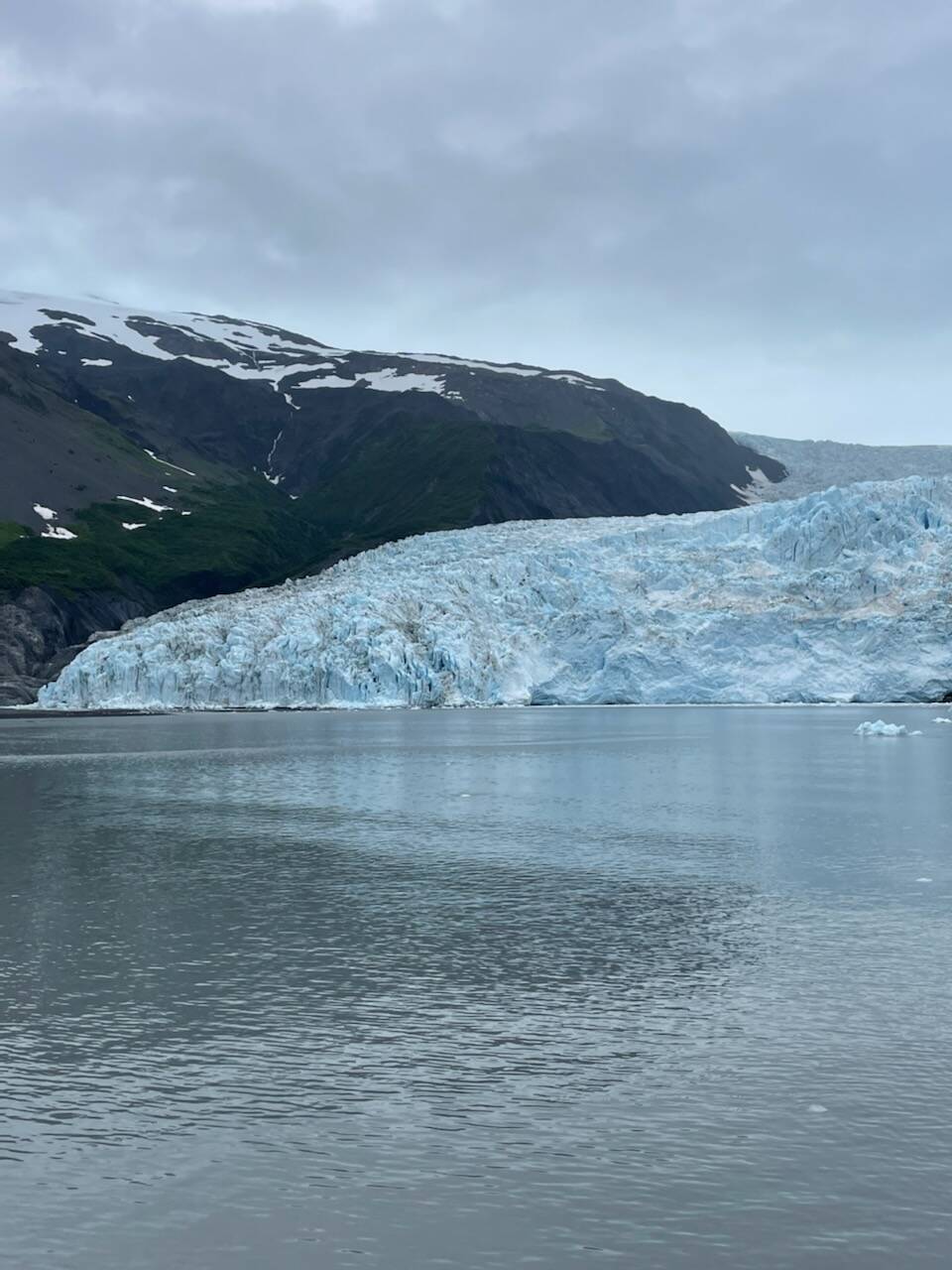In July I had an opportunity with Homer’s Center for Alaskan Coastal Studies to accompany a team of scientists students working on a research cruise to continue observations and sampling for contribution to the Northern Gulf of Alaska Long-Term Ecological Program on the 250’ R/V Sikuliaq.
There were many objectives identified in the cruise plan, most of them scientific in nature. For example, determining the macro- and micro-nutrient structure of the NGA Gulf Shelf or the vertical and horizontal distribution and abundance of zooplankton species.
I started from the Seward Harbor where I met the ship’s small boat for a ride out to the research vessel Sikuliaq waiting at the entrance to Resurrection Bay. Initial observations: relieved to finally get on the marine water, consideration of what the interior ship lab looked like as an outsider, how the deck operates, gaining general familiarity with daily vessel processes. I record views from the bridge: features of the weather on certain days, different colors of the sky when I can’t see land.
The bridge is mostly for ship crew, but it’s where I felt more familiar with the setting than the lab: a hybrid between the vocational world of boats and the academic world of science.
I joined the night crew, towing a multinet depth-stratified device to collect both plankton and jellyfish. There were many features of this that were new to me: the expectations of working approximately 9 p.m. to 6 a.m., how the trawls work, different types of nets, trawling in different phases of light and different depths, and variation in night weather when the wind and water picks up.
Aside from new observations of plankton collection and the opportunity to see what came up in the trawls just at the shelf level in the Gulf, my thoughts kept coming back to the relationship between novelist John Steinbeck and scientist Ed Ricketts, particularly from the book “Log from the Sea of Cortez.”
This will take a moment to explain, and I won’t get into it too much. The way it originally emerged was through discussion of the upcoming 2022 annual conference of the National Long Term Ecological Research Networks taking place later in the year in Monterey, California. Several people on the cruise planned to attend the event. Monterey is where Rickett’s science laboratory was located and near to Steinbeck’s home town of Salinas, California. That led me into a brief research reflection on Rickett’s examination of plankton on the Pacific coast.
Steinbeck provided this quote in his book: “All things are one thing and that one thing is all things: plankton, a shimmering phosphorescence on the sea and the spinning planets and an expanding universe, all bound together by the elastic string of time. It is advisable to look from the tide pool to the stars and then back to the tide pool again.”
The relevance of this quote to my time on the boat was that on the night of July 21 there was an announcement for potential northern lights on the central Gulf Coast of Alaska. I was assisting on the back deck and though it was barely dark enough at this point in the summer; at approximately 3 a.m. those of us awake thought we could see a blurry sign of slight illumination in the sky above us.
Though I appreciated the time to learn a little more about how to collect plankton and observe them under microscopes, I was motivated by the idea of the universal volume of seeing creatures from the trawl and aurora light at the same time. Also, the general excitement surrounding both features on the boat. It definitely contributed to the social context of the event overall.
And in the time of COVID, when inside the boat we all wore masks, it was a time to be outside, on the water, see faces of friends and colleagues, some new and some who have known each other for decades.
At this point, my interest is: What can I contribute to public awareness of the topics addressed via the science on a research ship like the Sikuliaq and a project like Northern Gulf of Alaska Long Term Ecological Research? How can public media fit in?
Here’s an example: It’s about 2 a.m. on July 20. We set our surface trawl just off the shelf on the Seward line in the Gulf of Alaska and when we pull the contents, PI Dr. Russ Hopcroft comes out to the deck and asks, “What’d you get?”
In the few nights I’ve been doing this, I’m not interpreting much of what I see except various types of jellyfish. This trawl pulls up about 15 salmon, undefined species because they’re too small but evident enough for me to recognize as salmon, and a large amount of “crab.”
Dr. Hopcroft refers to the clumps as a “mega-patch or monoculture” but the phrase that catches my attention: “It’s always a little bit of a story. Why did these guys like this spot?”
It brings me back to where my attention always lies in the philosophical/ theoretical question that I sometimes ask or at least consider when interviewing: “Do you see any comparison in working with “biological communities” and the community of people/ social community of time on the boat (or on campus or any human community, really)?”
It’s always a bit of a story.
Emilie Springer can be reached at emilie.springer@homernews.com


